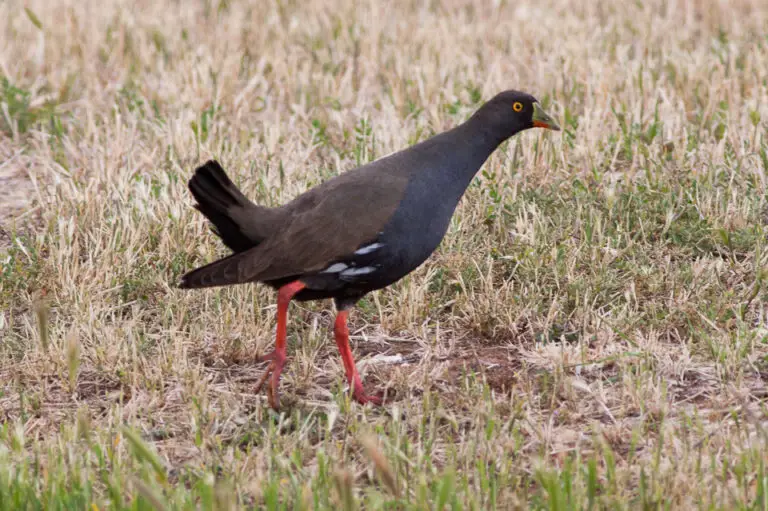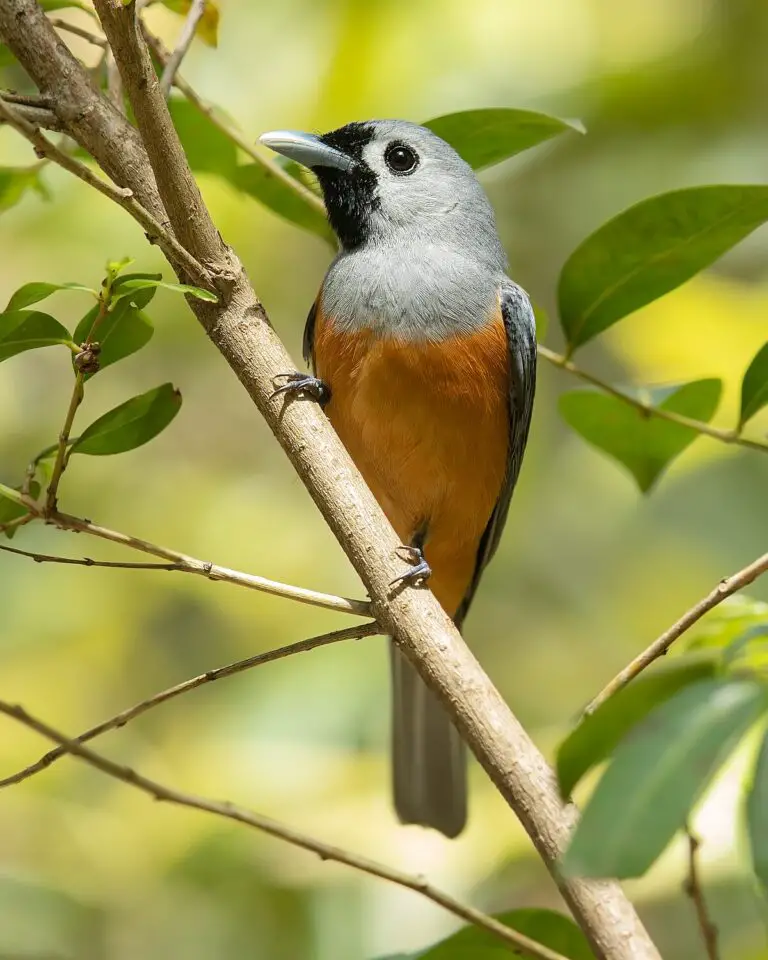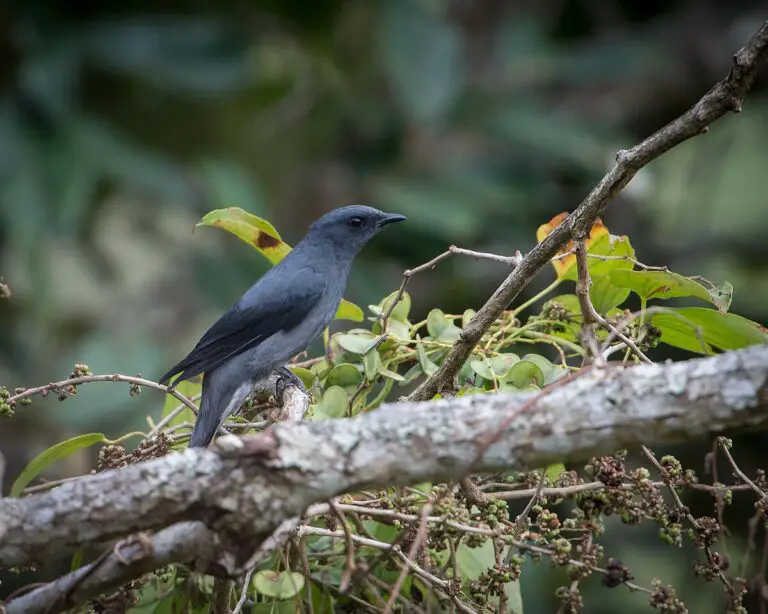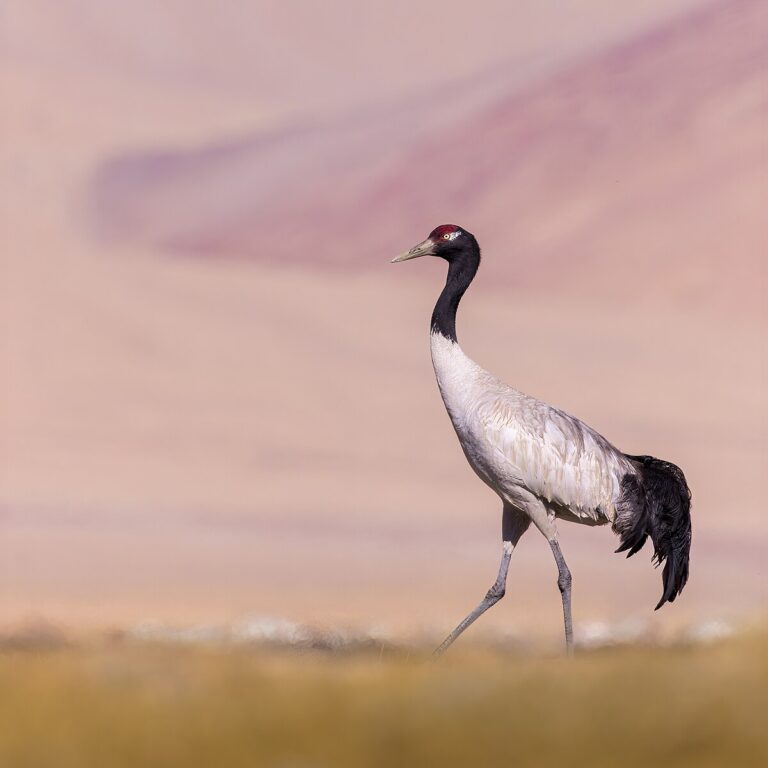Crocodile (Crocodylus Acutus)
“Known to eat pebbles to aid digestion and buoyancy!”
Crocodile Scientific Classification
- Kingdom: Animalia
- Phylum: Chordata
- Class: Reptilia
- Order: Crocodylia
- Family: Crocodylidae
- Genus: Crocodylus
- Scientific Name: Crocodylus acutus
Crocodile Conservation Status
- Status: Least Concern
Crocodile Locations
- Africa
- Asia
- Central America
- North America
- Oceania
- South America
Crocodile Facts
- Prey: Fish, crustaceans, deer, buffalo
- Name of Young: Hatchling
- Group Behavior: Social
- Fun Fact: Known to eat pebbles to aid digestion and buoyancy!
- Estimated Population Size: Unknown
- Biggest Threat: Habitat loss and hunting
- Most Distinctive Feature: Eyes and nostrils located on top of the head and snout
- Other Names: American crocodile, Orinoco crocodile, Freshwater crocodile, Philippine crocodile, Mexican crocodile, Nile crocodile, New Guinea crocodile, Mugger crocodile, Estuarine crocodile, Cuban crocodile, Siamese crocodile, Dwarf crocodile, Slender-snouted crocodile
- Incubation Period: 3 months
- Age of Independence: 1 – 2 years
- Habitat: Rivers, lakes, marshes, lagoons, mangrove swamps, and estuaries
- Predators: Humans, large felines, birds of prey
- Diet: Carnivore
- Lifestyle: Nocturnal
- Common Name: Crocodile, Croc
- Number of Species: 13
- Location: North, Central and South America, Africa, Asia, Australia
- Slogan: Have changed little in 200 million years!
- Group: Reptile
Crocodile Physical Characteristics
- Color: Brown, Grey, Black, Dull Olive
- Skin Type: Plate-like scales
- Top Speed: 25 mph
- Lifespan: 20 – 70 years
- Weight: 18kg – 1,000kg (40lbs – 2,200lbs)
- Length: 1.7m – 7m (5.5ft – 23ft)
- Age of Sexual Maturity: 4 – 12 years
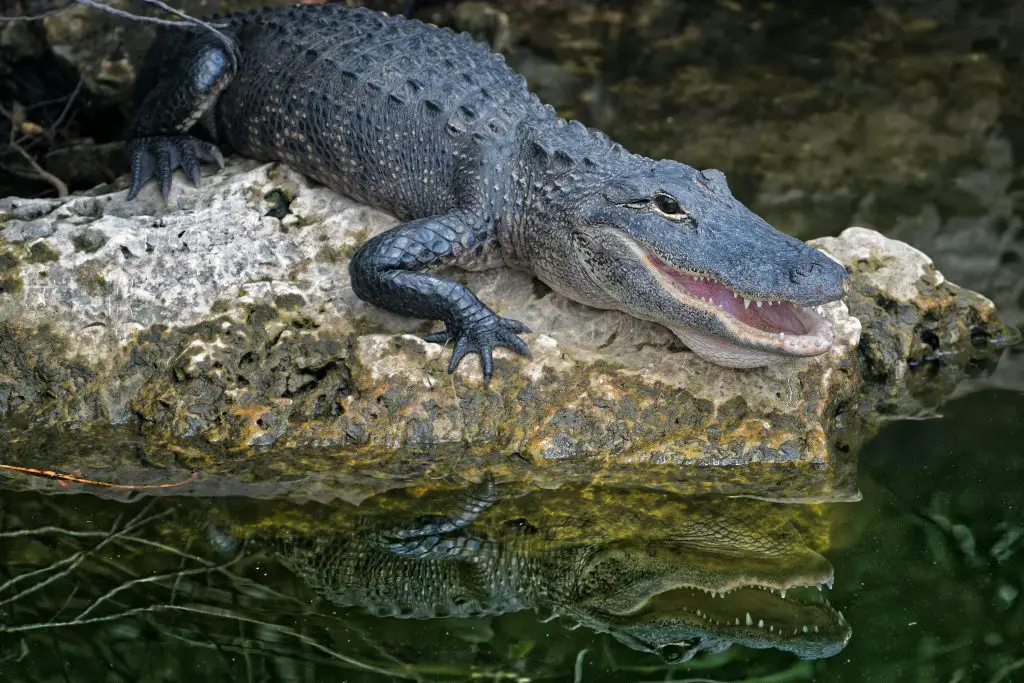
Quick Facts:
Crocodiles, unlike other reptiles, belong to the ancient group of archosaurs, which also included dinosaurs. These formidable creatures are known for their powerful bodies, strong jaws, and impressive speed and agility. As apex predators, they play a crucial role in their ecosystems.
Unique Characteristics and Behaviors:
- Archosaurs: Crocodiles are part of an ancient group of reptiles that included dinosaurs.
- Basking: They bask in the sun to absorb warmth, ensuring they have enough energy for nighttime hunting.
- Social Hunting: Crocodiles often hunt in groups and communicate using hisses, chirps, and bellows. Baby crocs can emit high-pitched screams when distressed.
- Survival Without Food: They can survive up to three years without eating, showcasing their incredible adaptability.
Predatory Skills:
- Apex Predators: Their powerful bodies, strong jaws, and immense speed and agility, combined with unparalleled stealth, make crocodiles one of the top predators in their natural habitats.
Types
Crocodiles are an incredibly diverse group, with numerous species found across the globe. Here are some notable types:
- Saltwater Crocodile (Crocodylus porosus): The largest reptile on the planet, found in Australia, India, and Micronesia.
- Nile Crocodile (Crocodylus niloticus): Known for extreme aggression, mainly found in African regions south of the Sahara and parts of Madagascar.
- American Crocodile (Crocodylus acutus): Found in Florida, Mexico, Peru, and Venezuela, with an affinity for saltwater.
- Hall’s New Guinea Crocodile (Crocodylus halli): Found in the southern part of New Guinea, inhabiting estuaries, lakes, and rivers.
- Orinoco Crocodile (Crocodylus intermedius): Occupies the Orinoco River Basin in Colombia and Venezuela, known for its large size and pale hide.
- Freshwater Crocodile (Crocodylus johnstoni): Thrives in freshwater habitats, coexisting with salties but smaller in size.
- Philippine Crocodile (Crocodylus mindorensis): Golden brown scales, important for maintaining fish stocks, found in the Philippines.
- Morelet’s Crocodile (Crocodylus moreletii): Known for webbed posterior feet and dark scales, found in Central America.
- New Guinea Crocodile (Crocodylus novaeguineae): Nocturnal species found in the north of New Guinea.
- Mugger Crocodile (Crocodylus palustris): Light olive coloring, found in India, Iran, Nepal, Pakistan, and Sri Lanka, known for its wide snout.
- Borneo Crocodile (Crocodylus raninus): Found in Borneo, remains somewhat mysterious to experts.
- Cuban Crocodile (Crocodylus rhombifer): Highly intelligent, long-limbed, found in Cuba.
- Siamese Crocodile (Crocodylus siamensis): Green-scaled species capable of growing large, found in Southeast Asia.
- West African Crocodile (Crocodylus suchus): Ranges from dark to pale scales, found in forests and deserts in West Africa.
- Osborn’s Dwarf Crocodile (Osteolaemus osborni): Found in the Congo River Basin, central Africa.
- Dwarf Crocodile (Osteolaemus tetraspis): The smallest crocodile species, found in forests or caves.
- West African Slender-Snouted Crocodile (Mecistops cataphractus): Recognizable by its pointed snout, found in West Africa.
- Central African Slender-Snouted Crocodile (Mecistops leptorhynchus): Found throughout Central Africa, including Southern Sudan.
Each species has its own unique characteristics and habitat preferences, contributing to the rich biodiversity of crocodiles worldwide.
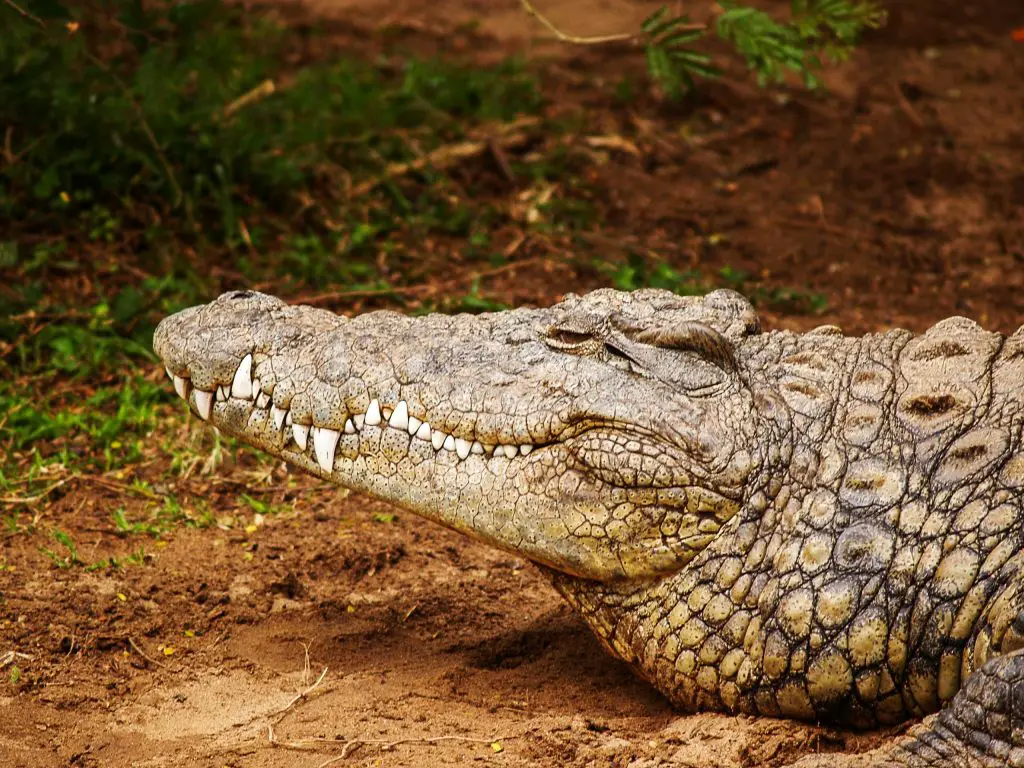
Evolution
Crocodiles are part of a family that includes alligators, caimans, and gharials. Despite the passage of 200 million years, crocodiles have remained remarkably unchanged in terms of evolution. They belong to a group called archosaurs, which also included dinosaurs, but unlike dinosaurs, crocodiles managed to persist after the mass extinction event around 65 million years ago. Their ability to thrive in various environments is attributed to their exceptional adaptability. Currently, there are 13 known species of crocodiles living in both freshwater and saltwater habitats across different continents. Their semi-aquatic lifestyle has spurred the development of several adaptations that contribute to their successful survival in the wild.
Etymology
The term “crocodile” finds its roots in the Ancient Greek word “krokódilos” or a similar variant. When the name was Latinized, the initial “k” was changed to a “c”. There’s a theory among scholars suggesting that “crocodile” might be a blend of two Greek words: “krokè” meaning pebbles and “drilos” meaning worm.
Anatomy and Appearance
Crocodiles are hefty reptiles boasting tough, scaly skin composed of waterproof plates. This armor not only safeguards them from potential threats but also prevents dehydration. Their scales display a spectrum of colors, blending seamlessly with their watery and vegetated surroundings, ranging from olive and green to brown, grey, and black.
Similar to their crocodilian kin, these creatures have eyes and nostrils situated atop their broad heads and snouts. This strategic placement aids in their hunting technique—lying in wait beneath the water’s surface, nearly invisible, poised to strike unsuspecting prey.
To shield their eyes from water damage while submerged, crocodiles possess a unique transparent third eyelid. Additionally, external flaps seal off their ears and nostrils, and their specialized respiratory system allows them to remain submerged for extended periods, up to five hours at a stretch.
Their robust, vertically flattened tails serve as powerful propulsion tools in water, while their webbed feet remain largely unused for swimming assistance. From the petite dwarf crocodile measuring under 2 meters to the colossal estuarine crocodile, also known as the saltwater crocodile or “saltie,” stretching up to 7 meters in length and weighing a whopping 1,000 kg, crocodiles span a vast range of sizes.
Distribution and Habitat
Crocodiles thrive in a variety of wetland environments within the warmer tropical waters of the southern hemisphere. Due to their inability to regulate body temperature internally, they heavily rely on basking in the sun to warm up after cooling off in water.
Americas:
In North and South America, the American Crocodile reigns as the largest crocodilian species. It calls freshwater rivers, lakes, brackish coastal waters near estuaries, and lagoons home. From southern Florida, through Central America, and into northern South America, these creatures establish their territories.
Africa:
Across Africa, the Nile Crocodile once enjoyed a broad distribution in eastern and southern regions, but its numbers have dwindled. They favor habitats such as freshwater marshes, rivers, lakes, and mangrove swamps. Holding the title of the world’s largest and most widespread crocodile species is the estuarine crocodile.
Asia and Australia:
These formidable reptilian beings are prevalent in river mouths and brackish swamps, stretching from the Bay of Bengal in the Indian Ocean across Southeast Asia and delving into Australia’s territories.

Behavior and Lifestyle
Crocodiles have been the focus of extensive research by numerous scientists and researchers aiming to unravel their behavioral intricacies. Despite many species remaining elusive and relatively understudied, common behavioral patterns have emerged.
Inability to Regulate Body Temperature:
Similar to other reptiles, crocodiles lack the ability to internally regulate their body temperature. Instead, they heavily rely on the warmth of the sun to heat their sizable bodies. During daylight hours, they can be seen basking on riverbanks, preparing themselves for nocturnal hunting. Interestingly, smaller species like the dwarf crocodile have been observed climbing trees to bask on branches.
Social Nature:
Contrary to their solitary reputation, crocodiles exhibit social behaviors including hierarchy and group dynamics. Within these social structures, the largest male typically occupies the top spot, enjoying prime basking locations. During group feedings, females are given precedence, particularly when a large prey has been brought down. This social behavior is notably observed in species like Nile crocodiles and Mugger crocodiles.
Communication:
Intriguingly, crocodiles possess the ability to communicate using various sounds, dependent on factors like species, size, sex, and circumstance. Sounds such as chirping signal imminent hatching, distress calls alert nearby crocodiles to danger, hissing serves as a threat display, and mating calls are distinctive to female crocodiles. Males emit a bellowing noise during mating season, employing it also as a means of intimidation against predators and rivals.
Cognitive Intelligence:
Crocodiles demonstrate a remarkable level of cognitive intelligence. They meticulously observe the behaviors of their prey, exploiting predictable patterns to their advantage. Some individuals have even been observed using nesting materials to lure birds within striking distance. Additionally, crocodiles exhibit cooperative hunting strategies, such as swarming larger prey while others secure the kill. Playful behaviors, including locomotive and social play, further highlight the complexity of crocodile societies, with activities like wrestling, swimming, and even riding on each other’s backs observed among these reptilian giants.
Reproduction and Life Cycles
Following mating, the female crocodile constructs a nest composed of soil and vegetation, like leaves, in which she deposits her clutch of eggs. The number of eggs laid varies, with dwarf crocodiles producing around 17 eggs and Nile crocodiles up to 100. This nest construction serves a dual purpose: it provides insulation to prevent the eggs from chilling if the nest is flooded during incubation, and in flood-prone regions, the crocodile may build nest mounds to elevate the eggs above potential floodwaters.
The incubation period lasts approximately three months, often coinciding with the onset of the rainy season, which helps prevent the hatchlings’ bodies from desiccating. Despite their formidable reputation, female crocodiles exhibit remarkable maternal care, fiercely guarding their nests against predators until the eggs are ready to hatch. Once hatching commences, the mother assists her offspring in reaching the water by carrying them in her throat pouch.
It’s fascinating to note that the evolution of thin-shelled, leathery eggs was a significant breakthrough for crocodiles and other modern reptile species. This innovation allowed females to lay their eggs on land, even in arid environments, providing better protection from predators. Typically, crocodiles enjoy a lifespan ranging from 25 to 75 years.
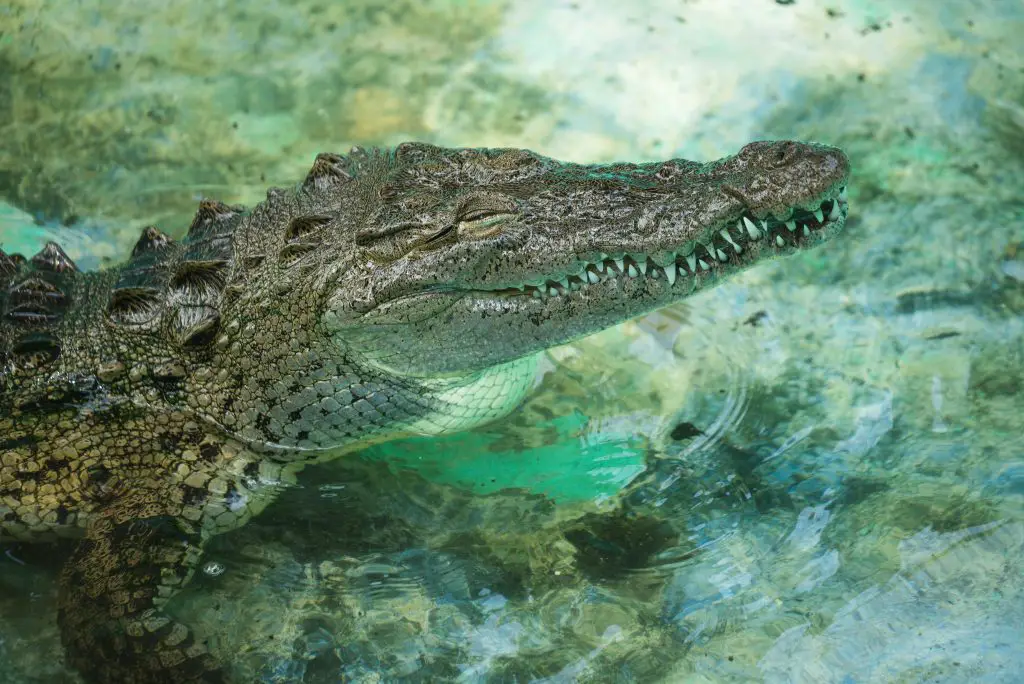
Diet and Prey
Crocodiles, as carnivorous apex predators, reign supreme at the top of the food chain in their natural habitats. Their inability to chew has molded them into formidable ambush hunters, relying on powerful jaws armed with teeth designed to tear prey apart.
In their youth, crocodiles subsist mainly on fish, crustaceans, and small mammals, birds, and reptiles. However, as they mature, they expand their menu to include larger prey such as deer, zebra, and even water buffalo. Nocturnal by nature, many crocodile species become more active at night, with some even venturing onto land to hunt prey, including livestock and, unfortunately, occasionally humans.
Their sociable tendencies are evident in species like Nile crocodiles, known for collaborative fishing efforts where they work together to corral migrating fish into manageable sections of river.
Crocodiles boast a leisurely metabolism, allowing them to float motionlessly for extended periods. In extreme circumstances, they can enter a dormant state, sustaining themselves from internal resources for prolonged periods. Remarkably, they can survive up to three years without a meal.
Their diet plays a crucial role in ecosystem balance; by preying on catfish, they regulate their population, enabling smaller fish species to thrive. These smaller fish, in turn, support over 40 bird species, whose droppings enrich the waters, nurturing a diverse array of life. This intricate web of predator-prey relationships underscores the vital role crocodiles play in maintaining the health and biodiversity of their habitats.
Predators and Threats
Crocodiles, as apex predators, face few natural threats in their adult stage. Their formidable size and aggressive nature deter most potential predators. Occasionally, big cats like lions, jaguars, and tigers may prey on them. However, juvenile crocodiles are much more vulnerable and are preyed upon by a variety of animals, including wild pigs, dogs, large reptiles, and birds of prey such as eagles.
Despite their prevalence in certain regions, crocodile populations are under threat in many areas. Hunting, habitat loss, and ecological changes pose significant challenges. Overfishing and water pollution, for instance, disrupt the food chain, indirectly affecting crocodiles by depleting their food sources.
Interesting Facts and Features
Although most crocodile species inhabit freshwater regions such as swamps, rivers, and lakes, several species venture into saltier waters around coastal areas. American crocodiles, for example, are often found in estuaries and lagoons near shores. They can tolerate higher salinity levels by drinking large amounts of freshwater when available and by secreting excess salt through glands on their faces, often referred to as “crocodile tears.”
During droughts, American crocodiles burrow deep into the mud to prevent dehydration, refraining from eating until water returns. In contrast, estuarine crocodiles, located on the other side of the world, have been observed consuming pebbles from riverbeds. This behavior is believed to help grind their food for better digestion and serve as ballast, aiding their buoyancy while floating on the water’s surface.
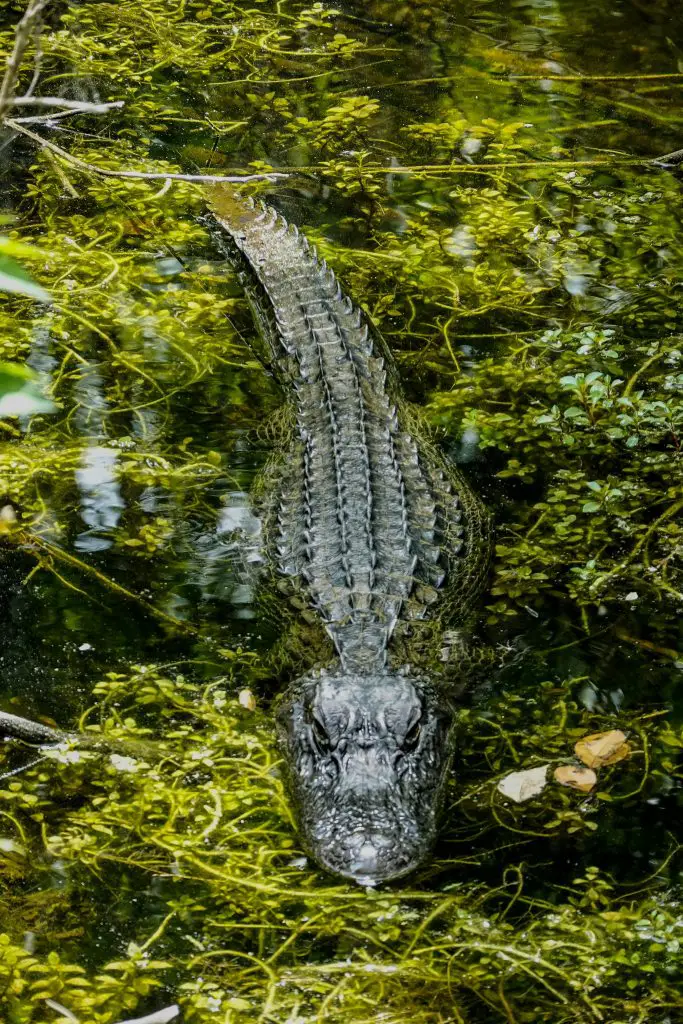
Crocodile vs Alligator
The order Crocodilia includes crocodiles, alligators, gharial, and caimans. One common question is how to distinguish between alligators and crocodiles. The key differences are:
- Snout Shape: Crocodiles have a more pointed, V-shaped snout, while alligators have a broader, U-shaped snout.
- Size: Crocodile species, such as saltwater crocodiles, can grow much larger than American alligators.
- Habitat and Salt Tolerance: American alligators lack salt glands and primarily live in freshwater environments. In contrast, American crocodiles are more adaptable to saltwater environments due to their ability to excrete excess salt through specialized glands.
Relationship with Humans
The relationship between crocodiles and humans has been contentious for thousands of years. Their aggressive behavior and powerful attacks on prey have led to numerous human fatalities annually, with instances of crocodiles hunting and ambushing people along riverbanks. Although better education and local knowledge about these formidable reptiles have helped reduce fatalities, an estimated 1,000 deaths still occur each year. Additionally, increasing human activity, such as settlement expansion and increased river traffic for hunting, fishing, and tourism, has heavily impacted crocodile populations in many regions.
Commercial Use of Crocodiles
- Crocodile Skin: Crocodiles are farmed worldwide for their hide, which is tanned and crafted into apparel, shoes, handbags, belts, and other high-fashion items. Crocodile skin is highly sought after and valuable in the fashion industry.
- Crocodile Meat: Considered a delicacy, crocodile meat is consumed in various countries, including China, Thailand, Cambodia, Korea, the Philippines, New Zealand, the Bahamas, and the USA.
- Crocodile Oil: Extracted from crocodile tissues, crocodile oil contains monounsaturated and polyunsaturated fats. It has been extensively used in traditional medicine across many Asian and native cultures for treating skin conditions, mending wounds, and addressing illnesses like cancer.
Cultural Significance
Crocodiles’ fierce nature has led to their worship in various cultures. In ancient Egypt, Sobek, the crocodile god, symbolized power and fertility, while Taweret, the goddess of fertility, had the tail and back of a crocodile on a human body. In parts of Africa, crocodiles are revered as ancestors and are offered food. In Hinduism, the god and goddess of water, along with several river deities, are depicted riding crocodiles.
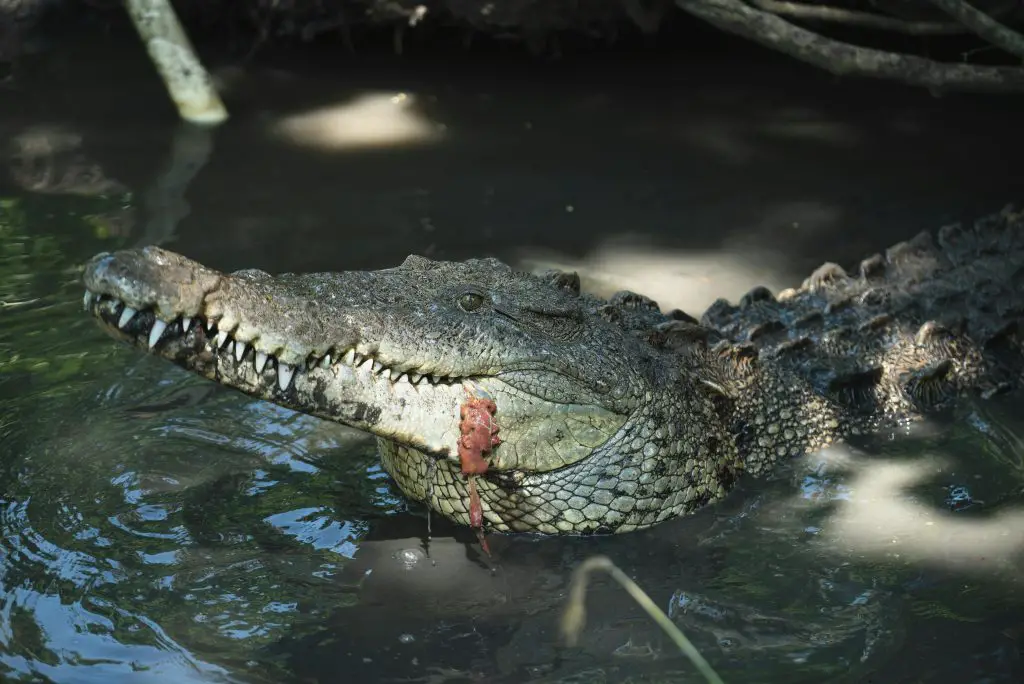
Conservation Status
Today, although some local crocodile populations are considered stable, the overall population numbers for all crocodile species are declining across much of their natural ranges. According to the International Union for Conservation of Nature (IUCN):
- 6 species are listed as Least Concern.
- 2 species are listed as Vulnerable.
- 5 species are listed as Critically Endangered.
Among these, the Philippine crocodile is the most at risk, with fewer than 200 individuals estimated to remain in the wild. This highlights the urgent need for conservation efforts to protect and restore crocodile populations worldwide.
Before You Go…
Crocodiles, as apex predators, play a crucial role in their ecosystems but face numerous challenges due to human activity. While some species have stable populations, many are in decline, with several listed as vulnerable or critically endangered by the IUCN. Conservation efforts are essential to protect these formidable reptiles and ensure their survival for future generations.
